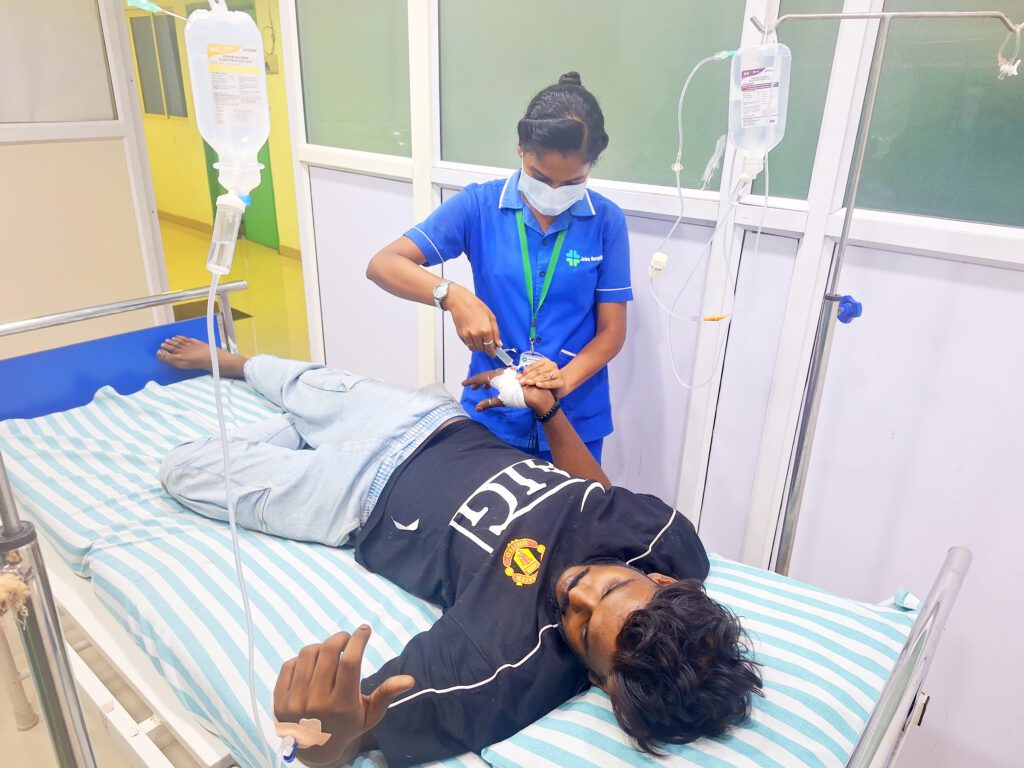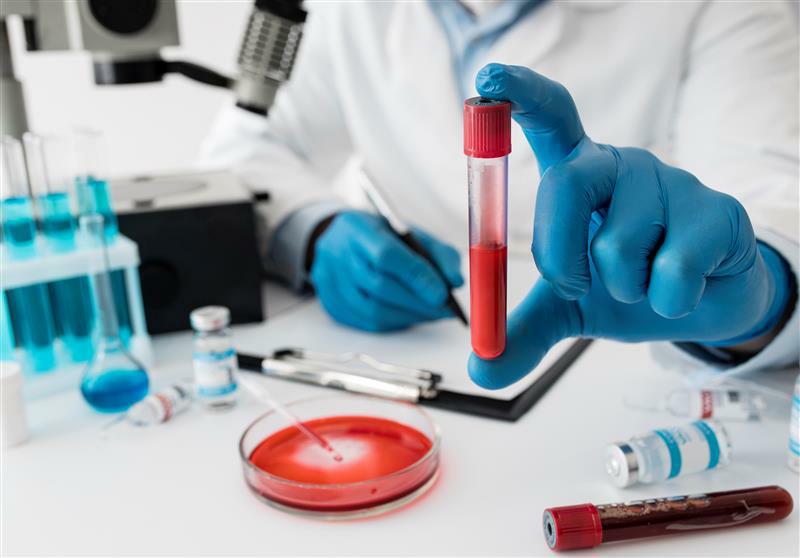Maintaining normal sugar levels is essential for overall health, especially in preventing and managing diabetes. Blood sugar, also known as blood glucose, provides energy for the body. However, when levels are too high (hyperglycemia) or too low (hypoglycemia), it can cause serious health issues. In this article, we’ll explore normal sugar levels by age, time of the day, and health condition, as well as expert guidance for effective monitoring and management.

Easy Accessibility & Appointments
Located conveniently on Velachery Road, Sembakkam, Chennai, Jolen Hospital is easily accessible for patients across the city.
📍 Address: Jolen Hospital, Sembakkam, Chennai
📞 Book Your Appointment:
- Mobile: 73058 55991
- Landline: 044 2228 3001
What Are Normal Sugar Levels?

Blood sugar is measured in milligrams per deciliter (mg/dL). The normal range depends on whether the test is done fasting, after eating, or randomly. Here’s a quick overview:
- Fasting blood sugar (before food): 70–99 mg/dL
- Post-meal (2 hours after eating): Less than 140 mg/dL
- Random test: Less than 200 mg/dL (without symptoms of diabetes)
- HbA1c (3-month average): Below 5.7%
Anything above these ranges may indicate prediabetes or diabetes, while lower than normal suggests hypoglycemia.
Normal Sugar Levels by Age
Blood sugar targets can differ depending on age.
| Age Group | Fasting (mg/dL) | After Meals (mg/dL) | HbA1c (%) |
|---|---|---|---|
| Children (under 6 years) | 80–180 | 100–200 | <7.5 |
| Children (6–12 years) | 80–150 | 100–180 | <7.5 |
| Teenagers (13–19 years) | 70–150 | 100–180 | <7.5 |
| Adults (20–59 years) | 70–99 | <140 | <5.7 |
| Seniors (60+ years) | 80–140 | <180 | <7.0–7.5 |
Note: Doctors may adjust the target ranges depending on health conditions, lifestyle, and treatment plans.
Normal Sugar Levels for Men and Women
While the target range is generally the same, men and women may have slightly different risks due to hormones, body composition, and lifestyle.
- For Men: 70–99 mg/dL fasting, <140 mg/dL after meals
- For Women: 70–99 mg/dL fasting, <140 mg/dL after meals (slight changes may occur during pregnancy or menopause)
Normal Sugar Levels During Pregnancy
Pregnancy requires special care to avoid gestational diabetes. High sugar levels can affect both mother and baby.
| Test | Target Range |
|---|---|
| Fasting | <95 mg/dL |
| 1 hour after meal | <140 mg/dL |
| 2 hours after meal | <120 mg/dL |
Regular testing and diet monitoring are essential for expecting mothers.
Normal Sugar Levels Chart
Here’s a quick reference chart for healthy individuals:
| Test | Normal Range |
|---|---|
| Fasting (before eating) | 70–99 mg/dL |
| Post-meal (2 hours after) | <140 mg/dL |
| Random blood sugar | <200 mg/dL |
| HbA1c (3-month average) | <5.7% |
Factors Affecting Normal Sugar Levels

Many factors influence blood glucose levels:
- Diet: Carbohydrate intake has the biggest impact.
- Exercise: Physical activity helps lower sugar.
- Stress & Sleep: Both can raise glucose levels.
- Hormonal changes: Menstrual cycles, pregnancy, or menopause affect sugar.
- Medications: Insulin and oral diabetes medicines control blood sugar.
How to Maintain Normal Sugar Levels
Maintaining healthy sugar levels requires a mix of diet, exercise, stress management, and regular monitoring.
1. Healthy Eating Habits
- Include whole grains, lean proteins, fruits, vegetables, and nuts.
- Avoid sugary drinks, junk food, and processed carbs.
- Prefer low glycemic index (GI) foods such as oats, brown rice, lentils, and beans.
2. Regular Physical Activity
- Aim for at least 30 minutes of exercise daily.
- Walking, yoga, cycling, and strength training improve insulin sensitivity.
3. Maintain Healthy Weight
- Even a 5–10% weight reduction can significantly improve blood sugar control.
4. Stay Hydrated
- Drink 8–10 glasses of water daily to help kidneys flush out excess glucose.
5. Manage Stress
- Stress hormones can spike sugar levels.
- Practice meditation, deep breathing, or hobbies to stay calm.
6. Sleep Well
- Poor sleep can increase insulin resistance.
- Ensure 7–8 hours of quality sleep daily.
7. Avoid Smoking and Alcohol
- Smoking worsens insulin resistance.
- Alcohol can cause unpredictable sugar spikes.
8. Regular Check-Ups
- Visit your doctor for routine sugar level tests and timely advice.
How to Check Sugar Levels
Checking sugar levels regularly helps in early detection and effective management. Here are common methods:
1. Fasting Blood Sugar Test (FBS)
- Done after 8–10 hours of fasting.
- Gives an accurate picture of baseline glucose levels.
2. Postprandial (PP) Blood Sugar Test
- Done 2 hours after a meal.
- Helps assess how the body handles glucose intake.
3. Random Blood Sugar Test
- Can be done at any time of the day.
- Useful for quick checks but less reliable than fasting.
4. HbA1c Test
- A lab test showing average sugar levels over the past 2–3 months.
- Best for monitoring long-term control in diabetics.
5. Home Glucometer
- Portable device for self-monitoring at home.
- Requires a small drop of blood from a finger prick.
6. Continuous Glucose Monitoring (CGM)
- Small sensor placed under the skin.
- Tracks blood sugar levels throughout the day and night.
Special Considerations
- Children: Normal fasting sugar should be 70–100 mg/dL.
- Pregnant Women (Gestational Diabetes): Fasting should be below 95 mg/dL; post-meal below 120–140 mg/dL.
- Elderly: Slightly higher levels may be acceptable depending on health conditions.
Key Takeaway
Checking your blood sugar regularly and maintaining a healthy lifestyle is the best way to prevent diabetes and related complications. With proper diet, exercise, and monitoring, most people can keep their sugar levels within the normal range.
When to See a Doctor?
You should seek medical help if you experience:
- Frequent urination
- Excessive thirst
- Sudden weight loss
- Blurred vision
- Fatigue or weakness
At Jolen Multispecialty Hospital, Sembakkam, expert diabetologists provide advanced care for managing normal sugar levels. With modern diagnostic tools, lifestyle guidance, and personalized treatment, patients receive complete support for diabetes care.
Why Choose Jolen Multispecialty Hospital for Diabetes Care?
- Expert Diabetologists with years of experience
- Modern Testing Facilities (HbA1c, CGM, OGTT, etc.)
- Customized Diet & Lifestyle Plans
- Affordable Treatment Packages
- 24/7 Emergency Care
Location: Jolen Hospital, Velachery Rd, Sembakkam, Chennai – 600073
Email: jolenhospital@gmail.com
Phone: 7305855991 | 044 2228 3001
FAQs
1. What is the normal sugar level for adults?
For adults, a normal fasting blood sugar level is 70–99 mg/dL, and post-meal (2 hours after eating) it should be less than 140 mg/dL.
2. How often should I check my blood sugar levels?
It depends on whether you are diabetic or not. Non-diabetics usually don’t need frequent testing, while diabetics may need to check daily or multiple times a day as advised by their doctor.
3. What happens if sugar levels remain high for a long time?
Consistently high sugar levels can lead to diabetes complications such as kidney damage, vision problems, heart disease, and nerve damage.
4. Can stress affect my sugar levels?
Yes, stress hormones like cortisol can increase blood sugar levels, especially in people with diabetes.
5. What lifestyle changes help maintain normal sugar levels?
Eating a balanced diet, exercising regularly, staying hydrated, managing stress, and getting enough sleep help maintain healthy sugar levels.
6. Is 120 blood sugar normal after eating?
Yes, a reading of 120 mg/dL two hours after eating is considered within the normal range.
Conclusion
Understanding and maintaining normal sugar levels is key to preventing diabetes and ensuring long-term health. With regular monitoring, a healthy lifestyle, and expert guidance from specialists at Jolen Multispecialty Hospital, Sembakkam, you can effectively manage your blood glucose and live a healthier life.



